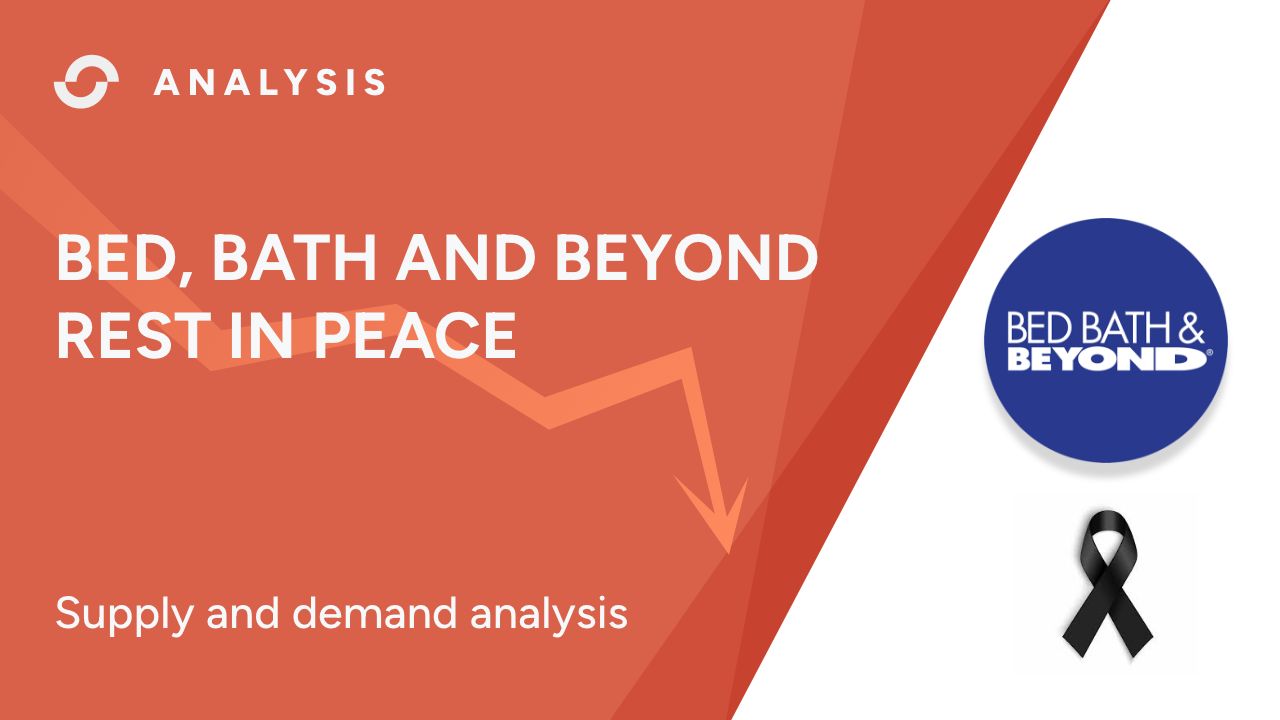05 Sep

Bed Bath & Beyond’s stock price fell dramatically a few days ago when young Jake Freeman bought a $25million stake through his own fund in July 2022. The USC math student made $110 million selling BBBY stock when its second biggest investor said he planned to offload all his stock, selling hundreds of thousands of Bed Bath & Beyond’s shares.
Shares of BBBY tumbled a huge per cent as billionaire investor Ryan Cohen exited the struggling home goods retailer by selling his 10% per cent.
But that’s not all that happened. You can read as much financial news as you want, but strong forces move the markets, and you won’t be aware of these supply and demand forces unless you use the bigger timeframes and ignore intraday charts.
Bed Bath & Beyond reached a monthly supply imbalance where a sell-off was expected, and that’s when all these actions happened, the offload of the stocks and the young student closed his position. Unless you are unaware of these imbalances, you will believe everything happened because of the news.
Unfortunately, Gustavo Arnal, Bed Bath & Beyond executive, jumped to his death from a high-rise apartment balcony as I was writing BBBY analysis and forecast. Gustavo, rest in peace.
Bed Bath and Beyond Price Today. Buy BBBY now?
As supply and demand traders, we do not need to pay attention to fundamental analysis. Unless you are doing very short-term trading and scalping, you should not worry about fundamentals for stocks and ETFs.
Trading is just waiting for the right trigger points and scenarios to present themselves, this game has a name, and it’s called the waiting game. We must patiently wait for the correct scenarios and setups to happen and for the price to pull back or dip into the price levels we want to trade. These price levels are made of supply and demand imbalances in our case. You can use these imbalances to plan your trades in lower timeframes.
Join our supply and demand online trading academy If you want to learn how to trade stocks using our supply and demand trading strategy.





